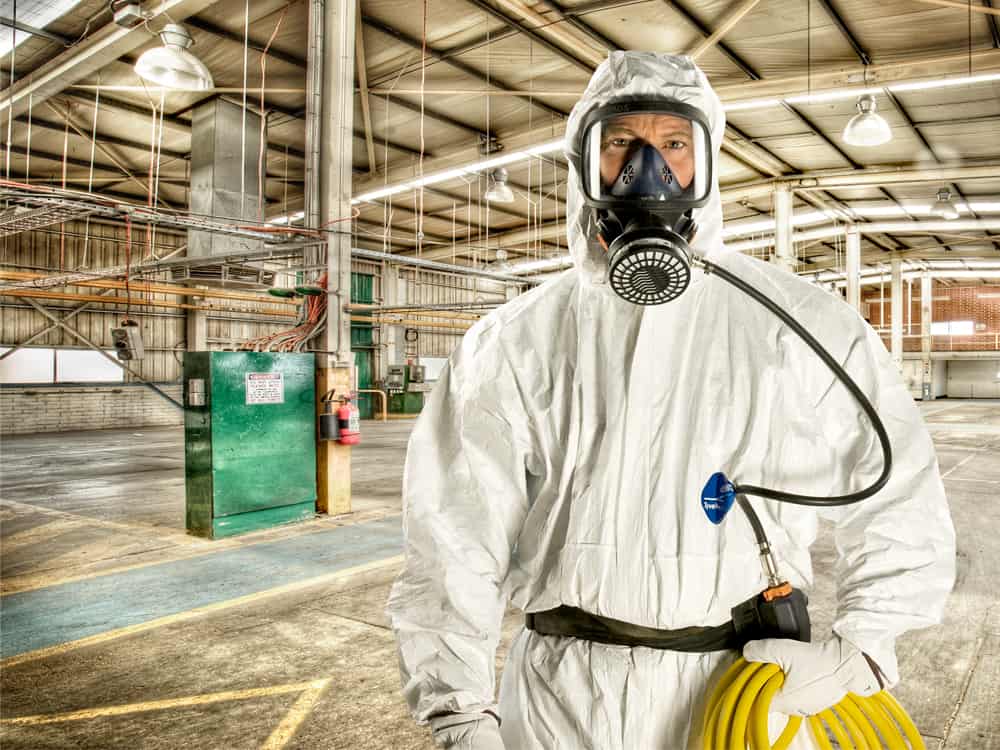The Complete Refine of Accredited Asbestos Evaluating to Guarantee Building Compliance
In the realm of residential or commercial property administration and compliance, the procedure of certified asbestos screening stands as a crucial element to make certain the safety and security and wellness of residents. From the initial evaluation to the final interpretation of results, each stage plays a vital function in establishing the existence of asbestos within a home.
Accredited Asbestos Testing: Initial Evaluation
In performing the initial assessment for accredited asbestos screening, a thorough exam of the property's products is imperative to properly identify potential asbestos-containing products. This essential action entails aesthetically inspecting all areas of the residential property, consisting of ceilings, walls, floor covering, insulation, and various other building products that might harbor asbestos. Unique attention is given to materials that are susceptible to harm or disruption, as these situations can launch harmful asbestos fibers right into the air. Furthermore, sampling of thought materials may be necessary to confirm the presence of asbestos through research laboratory analysis.
Certified asbestos assessors follow strict methods established by governing bodies to make certain the accuracy and reliability of the testing process. By thoroughly documenting searchings for and making use of sophisticated screening approaches, assessors can supply homeowner with an extensive record detailing the visibility of asbestos, if any type of, and the suggested actions for mitigation or removal. This initial evaluation establishes the foundation for succeeding actions to deal with asbestos issues and make sure the safety and security and compliance of the building.
Sample Collection Treatments for Asbestos Evaluating
Efficient example collection procedures are necessary in making sure exact asbestos testing results and conformity with regulative standards. When collecting samples for asbestos screening, it is important to comply with rigorous methods to lessen the danger of contamination and guarantee the reliability of the results.
Firstly, it is very important to recognize the thought asbestos-containing materials (ACMs) and focus on sampling locations based upon variables such as the material's condition, ease of access, and possibility for disturbance. Asbestos Testing. Examples ought to be collected from various areas within the property to provide an extensive analysis of asbestos visibility
Throughout sample collection, certified specialists should use ideal personal safety tools (PPE) to protect versus asbestos direct exposure. They should use clean tools, such as non reusable gloves and plastic sheet, to avoid cross-contamination between samples. Examples need to be thoroughly collected using a specified strategy, such as wet wiping or coring, and securely sealed in impermeable containers to maintain their stability throughout transport to the lab for analysis.
Lab Analysis Refine for Asbestos Samples
Upon conclusion of the example collection procedure, the asbestos examples are meticulously transferred to approved labs for thorough analysis. The very first action in the research laboratory analysis find out this here process is example prep work, where the accumulated samples are thoroughly processed to draw out the asbestos fibers.

Once the evaluation is total, go to this site an in-depth report is generated, outlining the searchings for and validating whether asbestos is present, the kind of asbestos fibers determined, and the focus levels. This info is important for homeowner to take the necessary steps to guarantee conformity with asbestos laws and protect the health of residents.

Coverage and Interpretation of Asbestos Test Outcomes
Approved asbestos testing laboratories provide detailed reports that use vital understandings into the visibility, type, and focus degrees of asbestos fibers discovered in samples gathered from buildings. These reports are important for homeowner and managers to recognize the threat presented by asbestos and make notified choices regarding its administration or removal. The records generally include details on the methods made use of for screening, the areas from which samples were taken, the kind of asbestos identified (such as chrysotile, amosite, or crocidolite), and the concentration levels of asbestos fibers identified.
Analyzing these outcomes needs knowledge to assess the potential health dangers connected with asbestos direct exposure, determine the appropriate strategy, and ensure regulatory compliance (Asbestos Testing). Depending on the searchings for, suggestions may range from continued monitoring and upkeep to encapsulation or total asbestos abatement. Homeowner must thoroughly examine these records and consult with asbestos professionals to establish an extensive check it out plan for addressing any kind of asbestos issues recognized
Ensuring Property Compliance With Asbestos Laws
To maintain adherence with asbestos laws, building owners have to diligently apply steps to make certain conformity with suitable laws and standards. This consists of performing routine asbestos inspections by accredited specialists to recognize any type of presence of asbestos-containing materials within the property. When asbestos is recognized, homeowner should follow asbestos management intends that synopsis correct control, elimination, or encapsulation procedures to stop exposure and spread of asbestos fibers. Conformity additionally involves maintaining detailed documents of asbestos testing, maintenance, and removal tasks for examination objectives.
Building proprietors need to offer asbestos understanding training to employees and residents to reduce the threat of asbestos exposure and make certain proper handling of products that might include asbestos. Additionally, it is essential to remain educated regarding any type of updates or adjustments in asbestos laws to change management techniques as necessary. By proactively dealing with asbestos compliance requirements, homeowner can develop a secure environment for owners and minimize prospective legal and wellness threats connected with asbestos direct exposure.
Conclusion
Finally, certified asbestos screening is an important process for guaranteeing residential or commercial property compliance with regulations. The preliminary analysis, example collection procedures, laboratory analysis, and interpretation of outcomes are all important steps in this process. By complying with these treatments, building owners can determine and address any type of asbestos hazards existing, safeguarding the health and wellness of owners and maintaining compliance with regulatory requirements.